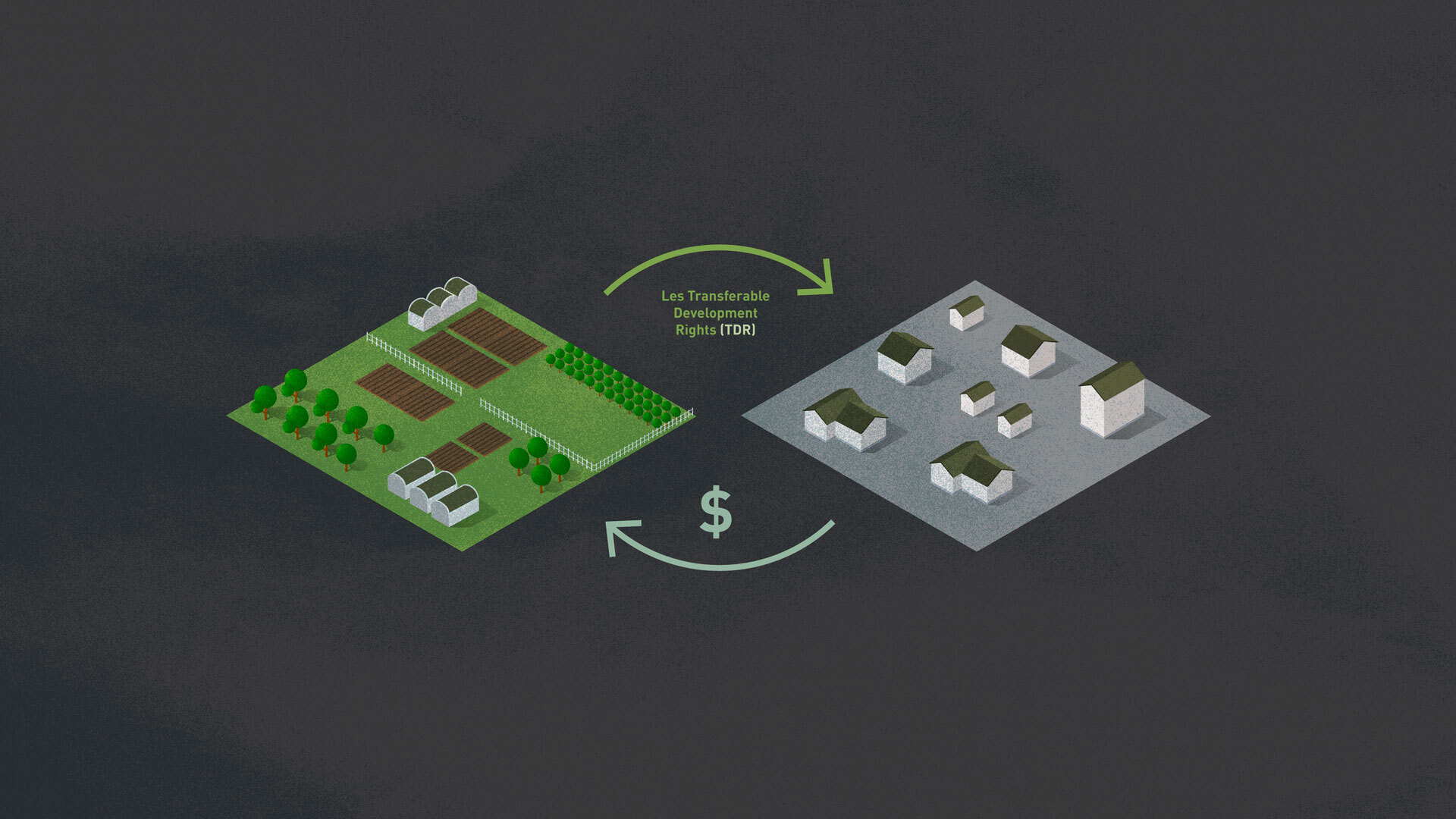The Transferable Development Rights (TDR) mechanism consists of breaking down property rights into several elements to enable the transfer of building (or development) rights as well as economic use rights from one parcel of land to another. While the first parcel is subject to a restriction on building rights, the second is subject to an increase in building potential.
The Foundations of the Terms of Reference
Objectives of the Master Plan for Land Use Planning (PDAT)
National Contributions
Implementation and Balance of Interests
National Scale vs Local Scale
Next Steps
The Foundations of the Terms of Reference
The Terms of Reference (TDR) can be associated with legislative and institutional devices similar to those of the Emission Trading Systems (ETS) implemented by the European Union to reduce greenhouse gas emissions. The TDR mechanism can be a powerful tool to reconcile urban development with soil preservation.
Objectives of the Master Plan for Land Use Planning (PDAT)
In the context of the Master Plan for Land Use Planning (PDAT), the Terms of Reference (TDR) can contribute to the implementation of the national territorial strategy, particularly in two phases:
Phase 1 (until 2035): Use of the Terms of Reference (TDR) to guide urban development in accordance with the urban framework defined by the Master Plan for Land Use Planning (PDAT), encouraging more concentrated and coherent growth of localities.
Phase 2 (until 2050): Reduction of soil sealing by aiming for zero net hectares, thus preserving the natural base of the territory.
National Contributions
The adoption of the Terms of Reference (TDR) at the national level can contribute to the creation of a resilient and decarbonized territory. They can also be used to implement urban regeneration strategies, the allocation of public spaces for active mobility, and many other measures of the Master Plan for Land Use Planning (PDAT).
Implementation and Balance of Interests
The implementation of TDR can vary depending on the objectives. It can be carried out at different administrative levels, requiring planning measures and urban planning measures. Suitable fiscal mechanisms can also be considered to encourage the adoption of TDR.
TDR can balance gains and losses resulting from the revision of development plans. This balance is achieved through direct financial transfers resulting from the transfer of development rights. At a smaller territorial scale, individuals are more likely to support TDR, as it can offset losses due to development plan revisions.
National Scale vs Local Scale
The adoption of TDR at the national level requires the definition of common legislative and institutional rules. It may also involve the creation of a TDR market, which will closely depend on real estate and construction markets.
Next Steps
In summary, TDR represents a potentially powerful tool to promote balanced development while preserving natural resources and heritage. Their implementation can vary depending on the objectives and territorial scale, but their adoption can contribute to more sustainable territorial planning. After the adoption of the PDAT, the Department of Territorial Planning is considering studying the modalities of implementing TDR within a working group. It would be wise to plan for a gradual implementation of the mechanism, starting with simple modalities and considering pilot projects with one or more municipalities.


